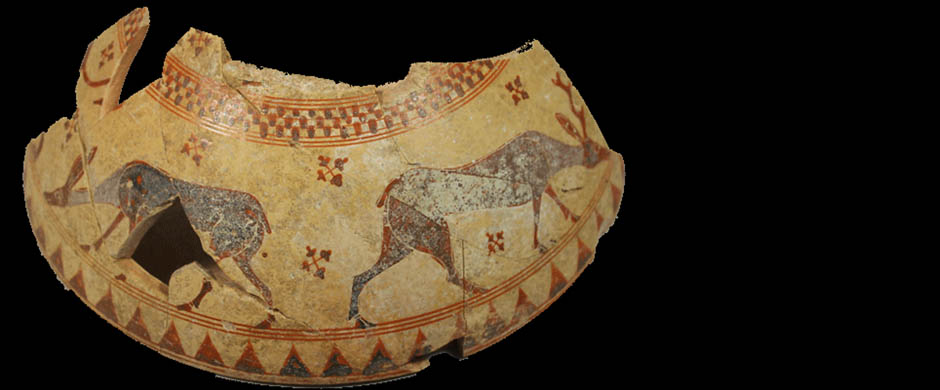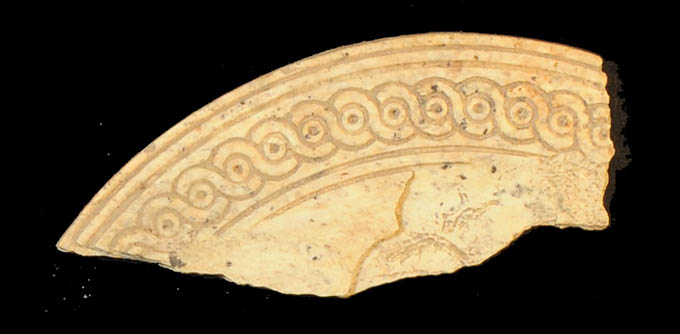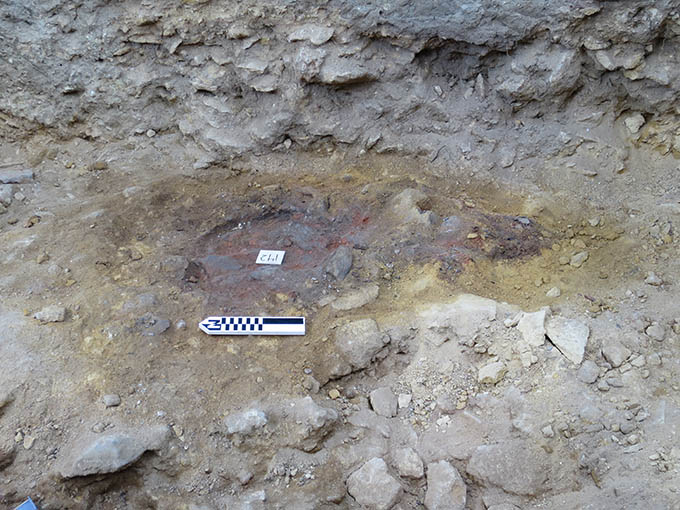 | In the Field
| In the Field

IFA Excavations at Selinunte
Summary of Excavation Results, 2014
In May and June we carried out our eighth campaign of excavation in the main urban sanctuary. Work this season consisted of the continued excavation of Trench P, opened in the previous year in the adyton of Temple R [Figure 1]. By the end of the season, the Classical and Archaic levels in the trench were excavated, down to the floor of an earlier structure datable to the seventh century BCE.

Figure 1. State plan of Temple R with indication of Trench P. © Institute of Fine Arts, NYU.
Our first finding this season was a wide looting pit dug into the center of the adyton, which reached all the way down to the bedrock, cutting through the stratigraphy associated with the earlier phases. This pit was sealed by the late fifth century floor excavated in 2013, and it is thus best associated with the Carthaginian conquest of Selinunte in 409 BCE. Fragments of precious votive offerings (including gold, silver, ivory and bone) [Figure 2] from the cut and fill of the pit suggest that it may have served for the looting of a foundation deposit placed in the center of the adyton. In this operation, the floor against the north and south interior walls was left untouched. The excavation of this floor revealed the complete absence of votive offerings underneath, showing that while in the cella votive depositions were generally lined against the interior walls, the practice in the adyton was quite the opposite. Of particular significance was the discovery of dozens of loomweights in the fill of the looting pit [Figure 3].

Figure 2. Fragment of bone fibula. © Institute of Fine Arts, NYU.

Figure 3. Loom weights. © Institute of Fine Arts, NYU.
Under the burnt layer corresponding to the Carthaginian destruction of 409, we excavated the thick layer (ca. 1 m high) of stone chips (from the dressing of the ashlar blocks of our building) that served as the foundation for the Archaic floor of Temple R. The materials from this layer confirm the dating of the construction of our building to ca. 580 BCE. Particularly notable has been the discovery, towards the bottom of this layer, in the SE corner of the trench, of the remains of an animal sacrifice, consisting of a thin layer of ash and bones, deposited directly upon the limestone chips [Figure 4]. The latter bore clear signs of burning themselves, thus attesting to a primary sacrifice. The bone fragments (burnt at a temperature exceeding 600°) belong to a ram (including a large horn fragment), two sheep, and one goat. This was likely a sacrifice associated with the construction of Temple R, which has particular significance in consideration of the attribution of this building to Demeter and Kore, and the strong connection of the ram with the cult of Persephone.

Figure 4. Remains of animal sacrifice in the foundations of Temple R. © Institute of Fine Arts, NYU.
Finally, under the layer of stone chips, we found the remains of a large structure taking most of the area of the trench. Evidence for this structure consists mainly of a clay floor (pierced by five pits of varying width and depth) similar to the one excavated in 2010 in trench L, but thicker: this, along with the distance between the two floors, may point to two separate structures, both dated to the first generation of life of the Greek colony. Finally, it may be noted that in the excavation of the fill of the looting pit, particularly towards the bottom, we have identified a significant number of fragments of Late Bronze Age pottery.
Clemente Marconi, The Institute of Fine Arts, New York University